We could not be more pleased than to welcome our long-time friends, ICY and SOT, to Los Angeles as the showcased artists of Thinkspace’s first-ever solo exhibition and full gallery takeover, Human (Nature).
This internationally acclaimed artist-activist duo (and brothers) first came to our attention over four years ago, via an interview I did with them in 2013. We instantly fell in love with their story of making their way to America from the oppressed environment of Iran, and with their ability to make a statement (political and otherwise) via their stencil and wheat paste brand of street art. We’ve continued to keep our eyes on them ever since.
In Human (Nature) the guys return to one of the most fundamental and widely disavowed plights that faces us all, globally and universally as humankind – the necessity of nurturing the environment we have steadily marauded and violated beyond repair. Invoking the peaceful balance of nature as a counterpoint to the deleterious effects of human consumption and waste, ICY and SOT want to inspire us all to see the planet’s vulnerability and to make small strides towards productive change and personal accountability.
Human (Nature) is on view at Thinkspace through November 24, Tuesdays – Saturdays, noon to 6:00pm.
Below is a taste of ICY and SOT’s creative process and work, and further down you can learn more about these amazing brothers from Tabriz, Iran. Enjoy.
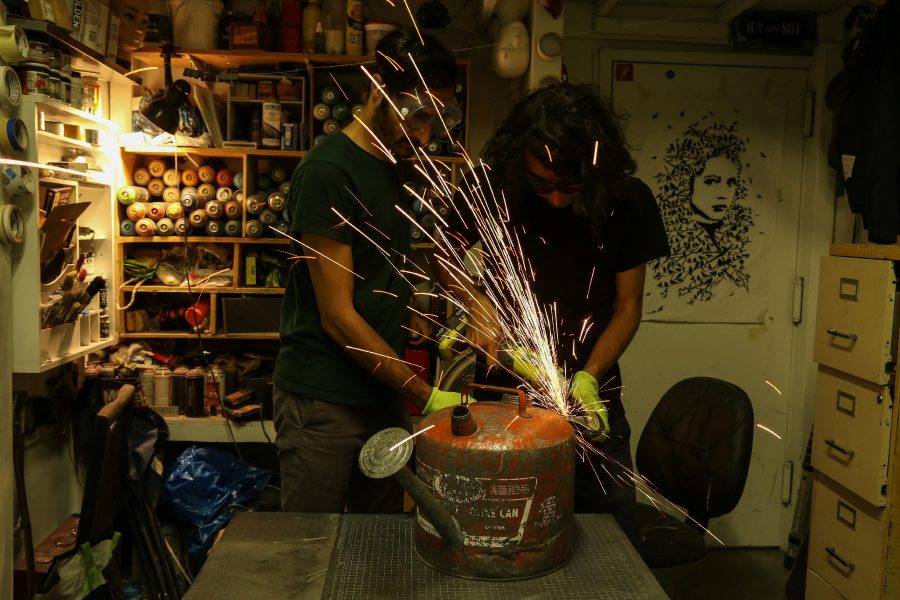
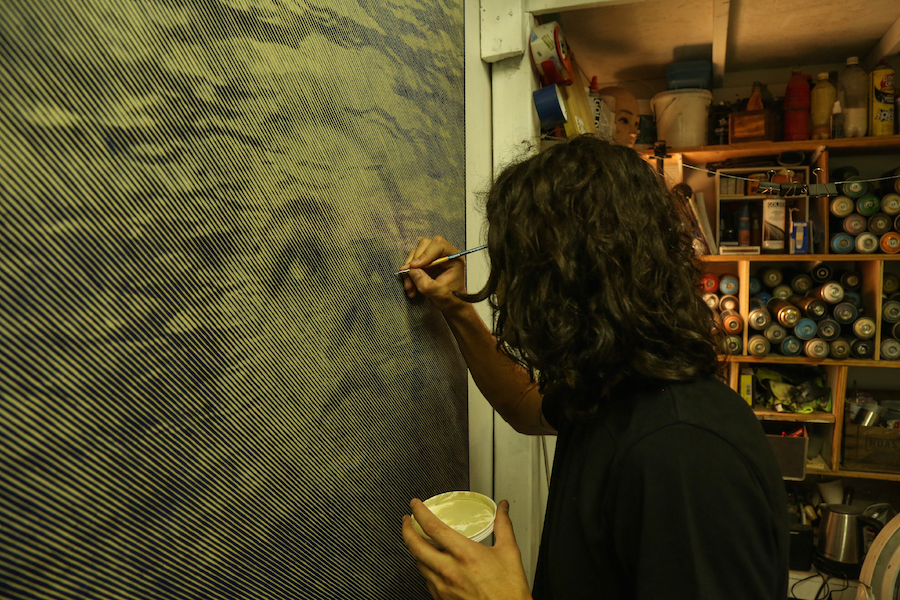
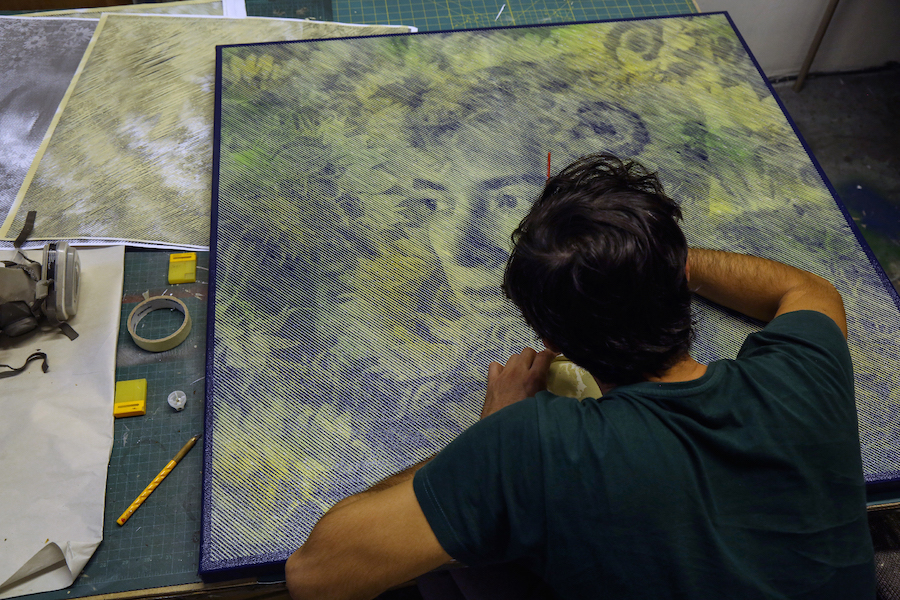
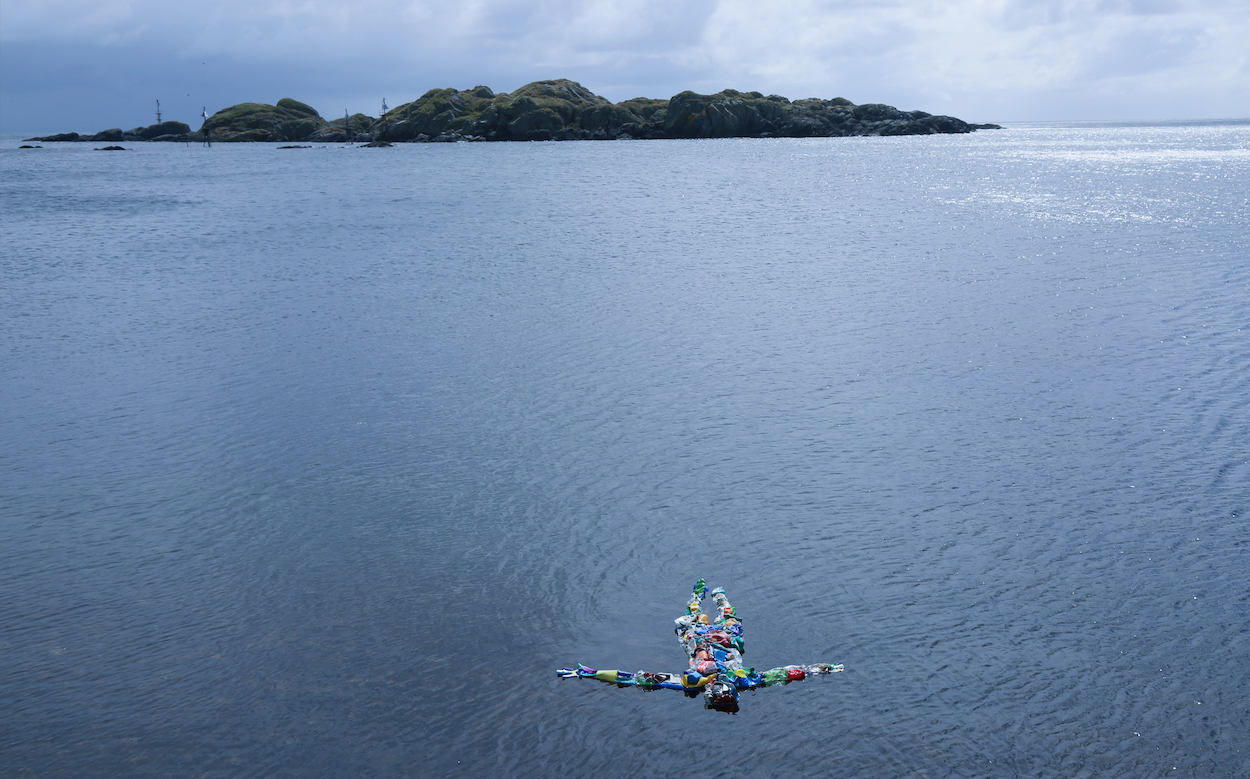
About ICY and SOT
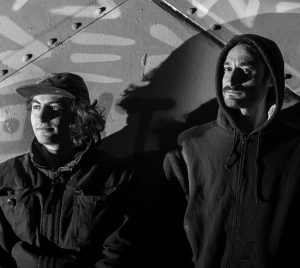
The brothers, born in the northwestern Iranian city of Tabriz, started their legacy as street artists by producing simple, single layer stencils and wheat pasted stickers in 2006. Throwing them up covertly, and as quickly as possible, wherever they could throughout the city’s less-traveled recesses, ICY and SOT were genuinely tapped into the impermanence of street art as a medium given their interventions would last no more than 24 hours in the highly regulated and censored Islamic political regime. Isolated by the political oppression steadily in place since the Islamic Revolution of the late ‘70s, the brothers, and their art grew and thrived under severely impeded circumstances.
All public exhibits and expressions of art in Iran are subject to intense scrutiny and suppression, forced to submit to government approval before any kind of dissemination. This is the unlikely political climate under which ICY and SOT found their voice. Every act of creativity under said circumstances becomes an act of protest and countercultural dissent, not to mention one of great risk and uncertainty. The brothers are no strangers to reprimand in a country where the political stranglehold demands imprisonment for minor acts of transgression. Their earliest imagery grew from this place of profound longing, driven by a desire to express compassion, truth, hope, and connect with the silenced cities and its inhabitants. Some of their first intercessions into the Iranian streets were recurring representations of children, specifically of a little boy with downcast stance walking forward. In their minds, the clearest and most direct expression of innocence and resilience they could invoke in a world of adult subjugation and violence.
One of the more remarkable aspects of the brothers’ work is that it evolved in a near cultural vacuum, emerging from anonymity and under the most restrictive circumstances to international recognition and acclaim. Though there were punk and skater countercultures that emerged in Iran in spite of the prevailing political climate, the brothers had no access to other manifestations of “street art” as an international genre with historical antecedents. It wasn’t until they were able to access internet sites beyond Iran’s firewall that they came into contact with other examples of the medium and its emergence as a “legitimate” art form, owing in significant part to New York’s vibrant 70’s and 80’s city culture. It was also through social media and image-based sites like Flickr that they were finally able to circulate photographic evidence of their work, the only extant and surviving record of their highly temporary intercessions in the streets of Iran, and were able to amass a following, connecting them with other artists and exponents of street-based art.
Finally, in 2012 they were granted travel Visas to attend a solo exhibition of their work in New York City, traveling to the US and leaving Iran for the first time. They took the opportunity to immigrate, settling in Brooklyn with mounting legal tensions surrounding their freedom of expression at home, and have since established themselves as thriving, generous, and active members of the artist community there. They have now created work all over the world, delivering poignant and humbling expressions of human pathos and compassion worldwide. Their output is immediately recognizable for its clean graphic aesthetic, reminiscent of print media, their use of elaborate multi-layer stencils, and now photo-based and sculptural works. Increasing in sophistication and diversity of messaging, the brothers have tackled topics such as poverty, homelessness, women’s rights, gun control, immigration, and climate change, converting the same terse and impactful language they had cultivated as political acts of protest in their home country to gestures of activism worldwide. Their work has richly evolved into several tangential and intersecting adjuncts as they continue to experiment with not only murals and walls, but gallery-based artworks, public interventions, like their advertising takeover series, and site-specific sculptural installations. All executed in the same minimal graphic language, sparse color, through clean impactful compositions.
The brothers continue their inspiring pursuit of truth and personal expression, reminding us with every public emission and imprint left on the world of the real power of art, imagery, and public activism in a world of discouraging desensitization. Now, more than ever, the active cultivation of freedom, mutual respect, and compassion through art is the cultural lifeline we’d all do well to support.
